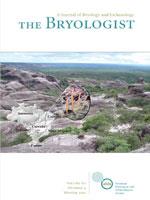This study provides a molecular phylogeny of Solenostoma and Plectocolea based on trnL-F and trnG-intron cpDNA sequences of 25 species represented by multiple accessions from different regions of Russia and some adjacent countries. Phylogenetic trees constructed using maximum parsimony, maximum likelihood and Bayesian methods are mostly congruent, except for an unstable position of P. vulcanicola, P. rosulans and S. caucasica. Based on our analyses we accept narrow generic concepts and provisionally conclude that only P. hyalina and the P. obovata-P. subelliptica-P. obscura-P. harana-P. emarginata complex should be transferred to the genus Solenostoma. Moreover, two species new to science are described and three varieties are elevated to the species level. Morphologically, Solenostoma rossica Bakalin et Vilnet is characterized by heteroicous inflorescences, red-purple pigmentation restricted to the perianth beak and a whitish-colored stem. Solenostoma major (S. Hatt.) Bakalin et Vilnet is characterized by deep purple rhizoid coloration and wide, flattened, undulate and distant leaves. Solenostoma ochotensis Bakalin et Vilnet has a Solenostoma-like perianth and well-developed plectocoleoid perigynium. Plectocolea kurilensis (Bakalin) Bakalin et Vilnet is similar to P. infusca s. str. but differs by commonly having smaller, grayish and more numerous oil-bodies, deflexed antical leaf margins, undulate leaves and purplish to almost purple rhizoids. Plectocolea ovalifolia (Amak.) Bakalin et Vilnet is only distantly similar to P. infusca s. str., as it has purple rhizoids, oil bodies unlike P. infusca, a smaller plant size, generally distant to rarely contiguous leaves, and ovate leaves, as opposed to lingulate to broadly or transversely elliptic leaves. It is suggested the new species originated in the contact zone of circumboreal and temperate East Asian floras with the possible influence of modern volcanic activity.
How to translate text using browser tools
28 November 2012
New combinations and new species of Solenostoma and Plectocolea (Solenostomataceae) from the Russian Far East
Vadim A. Bakalin,
Anna A. Vilnet
ACCESS THE FULL ARTICLE

The Bryologist
Vol. 115 • No. 4
Winter 2012
Vol. 115 • No. 4
Winter 2012
Hepaticae
liverwort taxonomy
Russian Far East




